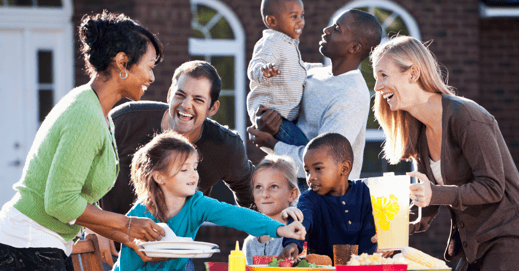
Once you learn about CLASS®, it is hard not to notice interactions between people everywhere you go! You even start to sort those behaviors into dimensions mentally—at least, I know I do! When this happens, it can lead us to our own "ah-ha!" moments when preparing to explain CLASS to others and give us some great examples. Connecting the tool to relevant, real-world examples helps everyone see the links between CLASS interactions and their everyday experiences.
We want to add to your collection of examples to help everyone understand and learn about interactions; thus, this “Real World Examples" series was born! Each post in this series will examine one dimension and give real-world examples of its indicators.
We will start by looking at the first dimension in the Emotional Support domain, Positive Climate. This dimension is all about interactions that create a warm, caring, and inclusive learning community. Through the CLASS lens, educators who consistently score high in Positive Climate foster a positive and respectful environment where all children can build meaningful relationships and experience a true sense of belonging.
Relationships
The Example: Getting To Know New Neighbors
Consider the process of getting to know new neighbors. It starts by talking in passing and asking how things are going. As you get to know them, perhaps you offer suggestions of some of your favorite parks, stores, and restaurants in the area. As the relationship builds, you begin talking about everything from kids to work to family. Soon, you’re planning trips to the park together or even neighborhood barbecues where everyone pitches in and comes together to talk and eat around the picnic table.
Enjoyment (Positive Affect)
The Example: Visiting A Weekend Market
For many people, going to a weekend market is a special treat. What makes it so enjoyable is the chance to talk directly with craft makers, bakers, farmers, and others. Each vendor seems genuinely happy to share their stories and what they do. As you look around, you see smiles and signs that everyone is having a great time. Some people are calm and content, while others are lively and full of laughter. Overall, everyone’s words and actions show that the market is a fun and welcoming place to spend a weekend morning.
Positive Communication
The Example: Kid’s Soccer Teams
Have you ever experienced children’s sports games, the ones where they are just learning their sport of choice? Take soccer, for example: imagine one team of girls learning the game and trying to find their coordination all at the same time. It's adorable but also a time of great influence for the girls trying to find their way in a new experience. Here, you will often find ample examples of positive communication. You might notice the coach greeting each girl enthusiastically, “I’m so glad you are here today!” and giving high-fives. During a water break, you notice the coach crouches down and tells the team, “I am so proud of how hard you are working today! I know if we keep working together, we can score another goal!” After the break, the girls run back out to the field, ready to do just that.
Respect
The Example: Getting a Haircut
Think about the times you’ve gotten a haircut. When you sit in the chair, your stylist or barber greets you with a warm, friendly tone of voice and introduces themselves. As you explain how you want your hair cut, they nod to show they’re listening and give you their full attention. They ask questions to make sure they understand exactly what you want before they begin. They might also ask you to show a photo of the look you want or help you find one together by searching on your phone. While they cut your hair, you cooperate by positioning your head as needed, and they explain why each movement is necessary. When they finish, you thank them, and they thank you for coming in and invite you to return soon. The whole experience is pleasant, making you feel respected, and hopefully, you leave with a new look you love!
When we experience strategies in action that foster a Positive Climate, we all feel more content, included, and respected. A Positive Climate is essential because it sets the tone for engaging with others in enjoyable ways that help to connect us together as a community.
Thinking about how and when you experience CLASS indicators in your personal life will make your understanding of CLASS more meaningful and relevant! Stay tuned for additional dimensions in this series. What are some of your favorite real-world examples of Positive Climate? Do you ever think about Positive Climate when navigating situations in the adult world? What have you learned from your experiences that can be applied to how you support children in the learning setting?

